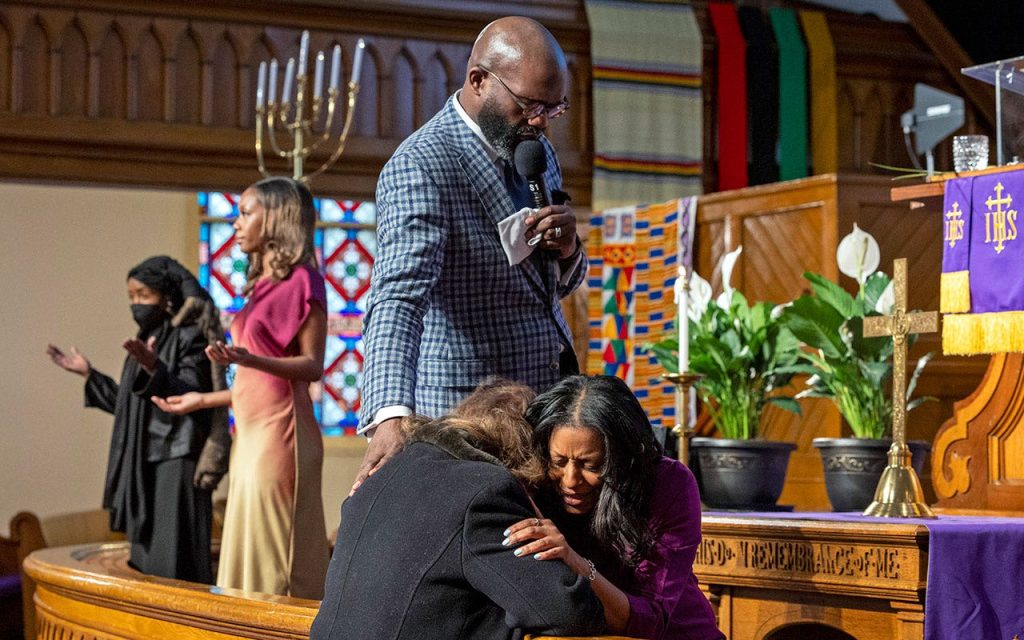As churches face declining attendance worsened by the pandemic, many congregants are opting for virtual services. Rev. William H. Lamar IV of Metropolitan African Methodist Episcopal Church initially resisted transitioning to online services during COVID-19, but has since adapted to offering both virtual and in-person services. More Metropolitan congregants are now choosing in-person worship over virtual as they mourn members who died from COVID-19. This Easter, Lamar is grateful to be back in person with his flock, believing it’s a fitting way to celebrate the holiday’s message of hope and resurrection, and an opportunity for Black churches to welcome more visitors to their pews and try to reverse attendance trends. Black Protestants have seen a decline in monthly church attendance, with many churches still feeling the pandemic’s impact on attendance even as they roll out robust online options to reach new people.
At Calvary Baptist Church in Queens, New York, senior pastor Rev. Victor T. Hall Sr. hopes to see a glimpse of the way things used to be this Easter, when his church was “packed and rocking.” Before the pandemic, Calvary’s numbers were already dwindling as many members moved to more affordable locales, with COVID-19 further impacting attendance. Hall acknowledges the difficulty of looking at empty pews and the loss of vibrancy and pageantry due to the inability to gather. Easter is typically a homecoming for Black Protestants, symbolized by new outfits accented with pastels and elaborate hats that reflect the Christian celebration and springtime renewal. The Rev. Kia Conerway of The Church at the Well in Memphis adapted through innovative marketing and online worship to grow her congregation, even as church members assemble care packages to virtually attenders to stay connected ahead of Easter.
At Saints Memorial Community Church in New Jersey, the Rev. Cassius L. Rudolph scrambled during the pandemic to ensure elderly members would be able to meet, initially leading services via telephone. Easter is eagerly anticipated by members looking to return to their renovated church sanctuary after being apart during the pandemic. At Trinity United Church of Christ in Chicago, the Rev. Otis Moss III reflects on the grief, loss, and suffering experienced over the past year, inspired to deliver an Easter message that examines the hope found in the space between crucifixion and resurrection. Moss emphasizes the importance of recognizing and addressing the pain and suffering of marginalized communities during this sacred season.
During Palm Sunday at Metropolitan AME, Rev. William H. Lamar IV reflected on the mindset of Jesus as he entered Jerusalem, urging his flock to consider his emotions as he faced crucifixion. Lamar’s powerful preaching, experienced live and in person, resonated with parishioners as they filled the sanctuary. His benediction at the end of the service allowed him to personally say goodbye to both old and new worshippers. This Easter season serves as a reminder of the strength and impact of Black preaching, especially when experienced firsthand. As churches navigate the ongoing challenges of declining attendance and the impact of the pandemic, this sacred season offers an opportunity for congregation members to come together, celebrate hope, and reconnect with their faith communities.















